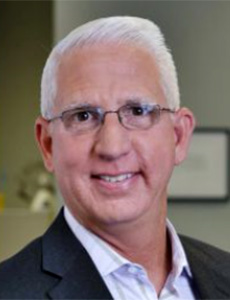Sponsored: Carisk Partners
5 Ways Front Line Claims Staff Can Take an Advocacy-Based Approach to Claims Handling

The health care industry invests significant resources to create positive experiences. It is well established that patient experience drives engagement, which impacts outcomes. In recent years, the industry has shifted to providing a more holistic approach to health and wellness, with a renewed focus on mental health.
For the workers’ compensation industry, however, there has been a historical challenge in driving this shift. The statutory nature of the workers’ compensation system includes processes that can be overwhelming, outdated and confusing to injured workers. Administrative burdens present barriers to providing ongoing quality care. This results in what can often be an adversarial relationship, fostering a climate of suspicion and cynicism rather than trust and compassion.
Incorporating transparency and a patient-centered approach helps to lessen uncertainties, anxieties and fears while building trust, which leads to improved outcomes. There is a paradigm shift currently underway for worker’s compensation, leaning towards a more value-based system versus a solely cost-based approach.
Employers have begun to implement collaborative, advocacy-based models ensuring their employees injured on the job are treated with compassion and respect. Claims leaders are likewise seeing the value behind an advocacy-based approach.
Many frontline staff, however, are not yet armed with the tools to implement this approach in their day-to-day.
“I often hear from claims handlers that they recognize the value of taking a more humanistic approach to working with their claimants,” said David Vittoria, SVP, Clinical Business & Product Development at Carisk. “But there’s a big problem: They don’t fully understand how an advocacy-based approach works. What questions should they be asking? What should they do with that information? How can they communicate differently to achieve better outcomes? The specifics of putting the philosophy into practice are fuzzy for most front-line staff.”
According to Rising Medical Solutions’ 2019 Workers’ Compensation Benchmarking Study 72% of frontline claims professionals don’t know what an advocacy-based claims model is. They may have been trained in the more transactional approach to handling workers’ comp claims, but lack training on softer skills such empathy and communication.
According to Vittoria, frontline staff respond well to training in these 5 critical areas of focus:
1. Build Trust Through Empathetic Patient Engagement

David Vittoria, LCSW, MCAP, ICADC, Senior Vice President, Clinical Business & Product Development at Carisk Partners
Interactions with injured workers should go beyond utilitarian purposes. If patients are to follow the care plan that is co-created with them, identifying what they can expect on their Pathway to Recovery, then they need to be able to trust the person explaining the why, where, when and how of that plan.
To establish that trust, it’s important to begin building rapport from the very first introductory call, and simple tweaks in word choice can help.
“Claims professionals might normally say: ‘We received a referral from this insurer. Let’s set up a call to go through what we need to do.’ Instead, it should be: ‘This is who we are, and we are here for you. Our job is to listen to you, help you assess your strengths and areas of opportunity, and to help coordinate the best care, with the right facilities and the practitioners, to meet your medical and behavioral health needs.’” Vittoria said.
That language clearly prioritizes the patient’s needs over the insurer’s and establishes a partnership which enables trust, rapport, transparency, authentic communication and ongoing collaboration, which can then help to mitigate the perception of the workers’ comp process as being adversarial.
Other language adjustments include referring to patients by their first name, reinforcing a recognition that they are a person, not just another claimant on the docket. Regularly acknowledging and empathizing with the patient’s frustrations, concerns or worries also reassures them that their input matters, and that there is a real understanding of the fear that often comes with a workplace injury.
“Patients are worried about their livelihood. Their financial security. Their ability to fulfill obligations to their family. Simply saying ‘I hear you’ helps to put people at ease and demonstrates compassion and respect,” Vittoria said.
2. Engage A Multidisciplinary Care Team
A patient-centric approach to care considers every aspect of health, not just the physiology of the injury itself. Ignoring mental health and overall wellness will ultimately prolong recovery and complicate a claim, especially in the case of traumatic injury.
Take for example a factory worker who suffers a partial arm amputation.
“You need doctors, nurses and rehab specialists with documented experience dealing with severe upper body injuries. They have the biomedical expertise. But you also need trauma-trained clinicians who can recognize and monitor signs of PTSD that might emerge from that kind of injury,” Vittoria said.
Engaging multidisciplinary providers from the outset establishes a framework for care that is necessarily comprehensive and multifaceted. This establishes an expectation that clinicians are to work collaboratively keeping the “whole patient” as the central focus.
“It’s important to compliment the needs of the individual patient as well as their family and social support systems, with a team of clinicians uniquely-matched to the specific needs of that patient, and with the relevant clinical, engagement and activation experience that’s required, given the unique nature of that case from the very beginning,” Vittoria said.
3. Uncover Patient Strengths and Abilities
In addition to identifying what the patient is unable to do as a result of their injury, Vittoria recommends inquiring about the patient’s personal talents and strengths.
Complement clinically sound, evidence-based care plans with recovery-based goals driven by what the patient is able to do and control. Evidence suggests that maintaining a positive mindset and focusing on function over limitations – embracing an abundance mindset with the patient, with the possibilities of healing and hope that go along with it; as opposed to an approach focused on scarcity, what’s broken, what seems impossible – can manifest in faster physical improvement.
“When patients start talking about their work ethic, their loyalty, their dedication to their family, their strength, their determination, their courage, their tenacity — not only does that help you get to know the patient better, but each of those qualities can be really helpful in recovery,” Vittoria said. “Listening to those strengths and looking for ways to replicate those strengths in their recovery is key.”
4. Address Psychosocial Elements in a Customized Care Plan
Creating a care plan that considers social determinants of health is a hallmark of patient advocacy in workers’ comp.
“Biopsychosocial is another buzzword used frequently in workers’ comp, but generally speaking the industry is not yet paying close enough attention to the other things going on in a patient’s life that could impede a full recovery,” Vittoria said.
Claims handlers have to make a conscious effort to ask about these factors just as naturally as they would ask about physical aspects of the injury. This includes asking about the patient’s financial status and the quality of their relationships with family and friends — two of the biggest and most common stressors is anyone’s life — as well as any history of mental health issues, learning more about their educational background, transportation options, and even cultural, ethnic, spiritual, religious and other factors which, if not fully understood and addressed, can compromise a patient’s recovery path.
For example, if a patient has a history of a severe alcohol use disorder, or another substance use issue, he/she should see a licensed clinician, experienced in dealing with addiction issues, pain, and other co-occurring medical conditions, and ideally, certified by the American Society of Addiction Medicine. This degree of customization and targeted provider-matching goes a long way in improving quality of care, but is only possible if asked up front. Claims handlers then need to be empowered to address all aspects of the comprehensive care plan that is devised to address the unique individual needs of the patient.
5. Keep Digital Communication Channels Open
Inconsistent communication is a major barrier in executing an advocacy-based model. To ensure injured workers are showing up to appointments, following doctors’ instructions and sticking to medication regimens, claims handlers need to check in continually. With hundreds of cases on their desk, however, maintaining this level of communication can seem impossible.
That’s why utilizing digital channels is critical. Many people prefer to chat digitally rather than over the phone, and the asynchronous nature of digital communication eliminates the need to play phone tag. Communication can happen on the patient’s schedule, and in a format that they feel comfortable using.
“Some patients will be more adept at responding to questionnaires, receiving educational clinical informational material, and doing mental health assessments in the app that we use,” Vittoria said. “It’s a great complement to the phone calls and in-person interactions, especially if people are nervous about discussing personal information.”
Making Advocacy Possible
To incorporate advocacy into these normal claims processes, frontline staff need support and resources from higher levels of management. Advocacy has to be a priority throughout the organization.
Carisk Partners creates a culture of advocacy in two key ways. First, by actively recruiting and developing clinical and support staff who have the right certifications and level of clinical expertise, as well as a solution-focused, patient-first mindset that aligns with the company’s mission. Carisk team members at every level within the multi-disciplinary team have to believe in, and fully embrace, the model.
Secondly, Carisk constantly trains its team members on the patient engagement and activation skills necessary to maintain their meaningful connection with patients. This includes consistent reinforcement of the guiding principles that are the foundation to Carisk’s approach – kindness, empathy, empowerment and mutuality – as well as ongoing coaching and team member development around proven concepts such as motivational interviewing, active and reflective listening, attention to tone of voice and word choice, as well as transparency (what Carisk refers to as “Authentic Communication”) and cultural competency.
“Clinical outcomes matter, but for advocacy to work, we have to train folks to listen and implement strategies that align with what the patient needs,” Vittoria said. “As an organization we ensure that our clinical team members never lose sight of the fact that there is a human being at the center of the claim. At the end of the day, we want to do everything we can to leave the patient in a better place as a result of having interacted with them.”
To learn more, visit https://www.cariskpartners.com/pathways-2-recovery/
This article was produced by the R&I Brand Studio, a unit of the advertising department of Risk & Insurance, in collaboration with Carisk Partners. The editorial staff of Risk & Insurance had no role in its preparation.










